Michelle Cooper's Blog, page 26
February 16, 2013
Five Favourite Picture Books
I don’t read many children’s picture books these days, but I’ve just come across two excellent ones, which reminded me of some old favourites. Note: I realise lots of children’s picture books are designed to teach Important Moral Lessons, but when I read a picture book, I mostly want it to make me laugh. All of these books deliver on that front.
1. This Is Not My Hat by Jon Klassen
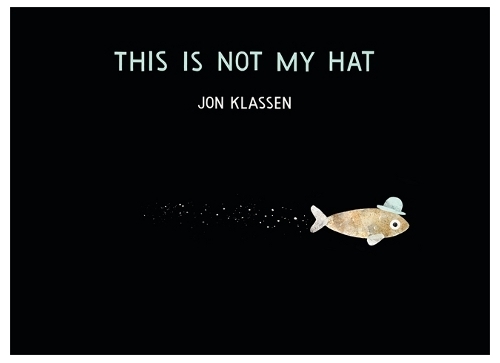
“A fish has stolen a hat. And he’ll probably get away with it. Probably.”
This is a clever and very funny story about a little fish who steals a hat from a big fish. The little fish is not worried about his crime, because even if the big fish “does notice that it’s gone, he probably won’t know it was me who took it. And even if he does guess it was me, he won’t know where I am going.” Unfortunately, it turns out there’s a witness to the crime. But he won’t tell, will he?
The illustrations are fabulous, featuring simple, flat figures that manage to convey a vast amount of information through tiny changes in shape. I loved the single, visible eye of the big fish, which progressively showed the fish asleep, awake, alert to his missing hat, angry, and very, very determined to get his hat back. And the text was perfect, juxtaposing the little fish’s blithe narration (“So I am not worried about that”) with images of his impending doom (a little crab with scared, googly eyes points frantically with his claw as the big fish bears down on them). Bonus points for this book because the text is printed in a clear, easy-to-read black font of uniform size on an off-white background. (My pet peeve regarding children’s picture books is when the illustrator uses a barely-readable font that meanders all over the page, changes size constantly and blends in with the background colours, all for no apparent reason other than to make the book seem Wacky and Zany. Illustrators – it just makes it really hard for new readers to figure out the words. So stop doing it.) Oh, and I guess this book does have an Important Moral Lesson, too: Don’t steal hats from big fish.
2. Mr Chicken Goes To Paris by Leigh Hobbs
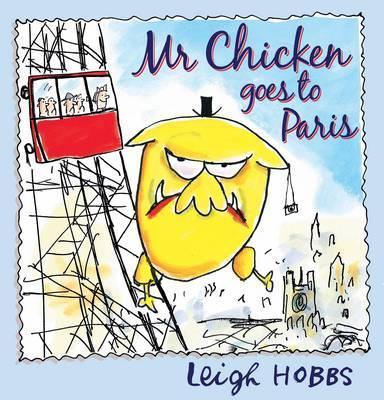
“The world’s most beautiful city meets the world’s most startling chicken . . .”
Mr Chicken, a four-metre-tall, bright-yellow chicken, visits his friend Yvette in Paris. It is a very eventful trip. He rides the Métro, drops in at the Musée du Louvre (where the tourists decide he’s far more interesting than the Mona Lisa), climbs the outside of the Eiffel Tower (“Mr Chicken was far too excited to wait for the lift”), plays in the bell tower of Notre Dame, does lots of shopping, and decides to go on a diet after looking at his “great big bottom” in the Hall of Mirrors at Versailles. This does not stop him eating “everything on the menu” at dinner, which causes some problems when he tries to squeeze onto the plane at the end of his trip. But luckily, his clever young friend Yvette has a solution . . .
Bonus points for teaching me some French phrases (for example, Monsieur Poulet va à Paris). Magnifique!
3. What Faust Saw by Matt Ottley
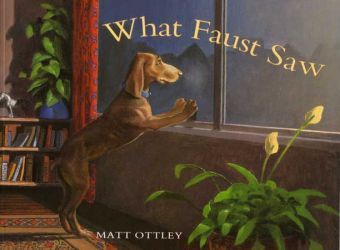
“One night, Faust woke up, looked out the window and saw something very strange . . .”
Faust is a big brown dog who just happens to be the only witness when a horde of drooling, multicoloured aliens invades his suburb. Faust wakes up his family to inform them, but they don’t believe him. It is all very unfair. Faust decides to run away (“Then they’d be sorry”), but the aliens follow him and worse, someone hears him barking at them. Oh no, it’s the dog catcher!
This book loses some points for having hard-to-read text in variable sizes that meanders all over the page, but the richly coloured, beautifully detailed oil paintings make up for it. This book was very popular with my young students (as long as I read the words aloud to them), because they loved the aliens, especially the big, dinosaur-like one with the disgusting string of snot hanging from one nostril.
4. Counting on Frank by Rod Clement
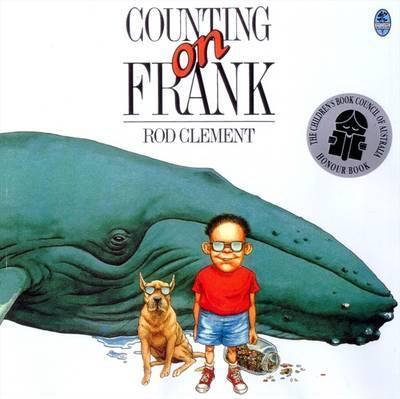
This book is about a boy who likes counting. No, he really, really likes counting. He especially likes calculating and estimating – for example, figuring out how long it would take the entire house to fill with water if he leaves the bath taps on and the plug in the bath, or how many humpback whales would fit inside his house, or how long his arms will grow if he has to keep dragging tins of dog food home from the shops for his dog, Frank. The (unnamed) boy’s counting is driving his parents mad – until they encounter a situation where his talent really comes in handy.
This has great illustrations of the bizarrely logical world of the boy’s imagination. This will appeal to children who like maths or have their own obsessive behaviours, especially when they see the boy’s (and Frank’s) moment of triumph at the end.
5. Traction Man Is Here by Mini Grey
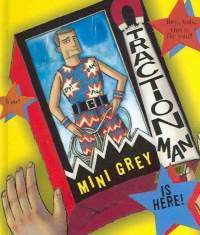
“An exciting adventure about a boy and his superhero can-do toy.”
A brand-new Traction Man arrives for Christmas (complete with “dazzle-painted battle pants”, jungle camouflage, sub aqua suit and space gear). He’s soon embroiled in daring adventures, including battling deep-sea monsters (aka a dishcloth in the sink), photographing the legendary Mysterious Toes (in the bathtub), rescuing dollies from the Wicked Professor Spade, and also acquiring a sidekick, Scrubbing Brush. But after taking the InterGalactic People Mover to Granny’s house, Traction Man faces his toughest assignment yet – getting rid of the “knitted green romper suit and matching bonnet” that Granny’s made him for Christmas.
This is a hilarious celebration of children’s imaginative play, with a few sly jokes for grown-ups hidden in the detailed, brightly coloured illustrations. Super good!
February 6, 2013
International ‘Please Don’t Pirate My Book’ Day
Apparently, today is International ‘Please Don’t Pirate My Book’ Day. Or maybe it was yesterday? Anyway, you already know what I think about people who illegally download copies of my books instead of buying the books or borrowing them from a library (and, for that matter, what I think of the term ‘piracy’ to describe this behaviour), but Seanan McGuire has just written a very good blog post about the issue, which you might find interesting.
I’d also like to take this opportunity to say a big ‘thank you’ to those of you who do buy books. You’re awesome.
‘Dated’ Books, Part Seven: Swallows and Amazons
A note for the benefit of those new to this series: ‘dated’ means ‘of its time, not ours’. ‘Dated’ books can be horribly offensive to modern sensibilities, or they can be charmingly nostalgic, or they can simply be a bit . . . odd. I found Swallows and Amazons by Arthur Ransome fell mostly into the ‘charmingly nostalgic’ category, apart from a couple of cringe-worthy scenes, which I shall discuss below. But first, have a look at the gorgeous old edition I read!

I love how, whenever I reserve a children’s book at my library, they give me the most ancient edition in existence, which I imagine they have to dig out of a wooden trunk in the deepest, darkest basement of Sydney Town Hall. This is a 1949 edition from ‘The Australasian Publishing Co. Pty. Ltd’, with a fraying, faded olive-green cloth binding. It’s so old, it has one of those cardboard pockets in the back, containing an orange card with the book’s details handwritten in blue ink. It’s so old, it has a flimsy bit of paper stuck in for date stamps1. It’s so old, it has an illustrated ‘Ex Libris’ book plate in the front proclaiming the book belongs to the ‘City of Sydney Public Library JUVENILE SECTION’2. This book even smelled nice (not a nasty, mouldy old-book smell, but a nice, dry, old-paper scent).
Anyway, to return to the datedness of the story itself. The main reason I think this book is dated is the central premise. How many modern-day middle-class English parents would allow their four pre-adolescent children to sail off by themselves to a deserted island for an extended camping holiday, when the youngest is seven years old and CANNOT SWIM? True, the island is a short boat trip from the mainland, and they visit a nearby farmer each day to collect fresh milk3 and bread, and their mother sails over a few times to make sure they haven’t drowned, set themselves on fire or died of malnutrition, but STILL!
Of course, the children prove to be sensible, capable and independent, as most children in the 1920s were. The Walker siblings put up their own tents, cook their own meals (often consisting of fish they’ve caught themselves), sail up and down the lake, have a ‘war’ with a couple of local girls and their grumpy uncle, and even manage to outwit some (admittedly, not very bright) burglars. Actually, the detailed descriptions of the children’s life on the island were my favourite parts of the story. Among other things, I learned how to sew and erect a tent, how to turn a pine tree into a lighthouse, and how to build a camp fire. (The very detailed explanations of how to sail a boat were not as interesting to me, but children who can sail would probably love these bits.) I also enjoyed the descriptions of the lake’s wildlife, such as the dipper bird “under water, flying with its wings, as if it were in the air, fast along the bottom of the lake”.
However, the children’s constant talk of ‘natives’ and ‘savages’ quickly became tiresome. Some critics argue that this sort of talk isn’t racist, because the children don’t actually insult or belittle the ‘natives’, and anyway, the ‘natives’ aren’t real. I think that’s rather disingenuous, when it’s made clear that Mrs Walker grew up in Australia4, and the book contains dialogue such as this:
” ‘This is where the savages have had a corroboree,’ said Titty. ‘They cooked their prisoners on the fire and danced around them.’ “
Her mother goes along with this ‘joke’,
“telling how she had nearly been eaten by savages, and had only escaped by jumping out of the stew-pot at the last minute.”
This sort of talk was perfectly acceptable in 1930, but is not so funny now, especially when there are politicians in Australia who have used the supposed ‘cannibalism’ of Aboriginal Australians to justify racist policies.
The book also reflects the attitudes to class in 1920s England. In one scene, Nancy, the young daughter of a local land-owner, berates a policeman who is, quite reasonably, asking the Walker children if they know anything about a nearby burglary:
” ‘Sammy, I’m ashamed of you. If you don’t go away at once, I’ll tell your mother . . . Run away, Sammy, and don’t make those mistakes again.’ “
Apparently, it’s fine for a child to chastise and humiliate an adult who’s simply doing his job, if the child is rich and the adult is the mere son of a servant.
I was also a little worried at first that this would be a book where the boys did all the exciting stuff while the girls did the housework, and indeed, Susan does do all the cooking and most of the cleaning on the island (she and her sister also wear frocks, which you’d think would be a bit impractical for sailing). In addition, their mother, a competent and intelligent woman bringing up five children by herself while her husband is at sea, has to write to ask his permission when the children want to camp on the island. However, Nancy proves to be quite good at destroying gender stereotypes. She wears breeches, can out-sail, out-shoot and out-plan John, and generally bosses everyone around. Also, Susan’s unfortunately-named younger sister Titty5 ends up saving the day several times during the course of their holiday SPOILER ALERT! by firstly, capturing Nancy’s boat during the ‘war’ and secondly, finding the treasure buried by the burglars OKAY, SPOILERS FINISHED NOW.
Overall, I enjoyed the children’s adventures, which were exciting but plausible (well, more plausible than anything the Famous Five got up to). I liked reading about such competent, good-hearted child characters, and I know I would have loved this book to bits if I’d come across it as a young reader. (Although I’m pretty sure that even then, I’d have raised an eyebrow at the racism.)
More ‘dated’ books:
1. Wigs on the Green by Nancy Mitford
2. The Charioteer by Mary Renault
3. The Friendly Young Ladies by Mary Renault
4. Police at the Funeral by Margery Allingham
5. Emil and the Detectives by Erich Kästner
6. The Wind in the Willows by Kenneth Grahame
_____
This book was in great demand in 1957 (borrowed three times!) but left the library only six times between then and 2003. ↩
It’s been a very long time since the City of Sydney had only one library, and I’m pretty sure the term ‘juvenile’ went out of fashion a couple of decades ago. ↩
Unpasteurised milk, straight from the cow, poured into an unsterilised milk-can! Because I am a persnickety grown-up with a science degree, I kept thinking, “I hope those cows have been tested for TB.” ↩
Slightly off-topic, I was puzzled by one of Mrs Walker’s tales about her childhood, when she described “the little brown bears that her father caught in the bush, and that used to lick her fingers for her when she dipped them in honey.” What is she talking about? Koalas? Possums? But they’re grey, not brown (unless they’ve been rolling in red dirt). She describes kangaroos separately, and anyway, kangaroos are not very bear-like. Maybe wombats? Do they like honey? Would any rational person put his or her fingers anywhere near a wombat’s mouth? ↩
This seemed such an odd name, even for the 1920s, that I had to investigate further. Apparently, three of the Walker children were named after real friends of the author, the Altounyans. Titty’s name, “the nickname of the real life Mavis Altounyan, from Joseph Jacobs’s children’s story, Titty Mouse and Tatty Mouse, has caused titters among generations of children, causing it to be changed to Kitty in the original BBC adaptation of the book”. ↩
January 31, 2013
Five Books, Five Songs: Through The Large Four-Chambered Heart
I had difficulties coming up with a song for my work-in-progress, so I asked the two main characters, Rosy and Jaz, for their opinions. Rosy immediately nominated Vincent by Don McLean, because Vincent van Gogh is her favourite artist and he makes an appearance in the book.
“It’s a very brief appearance, though, isn’t it?” I said. “I was hoping for a song that’s about the entire book.”
“Oh, right,” Rosy said. “You want something science-y, then. Never fear, I will use my amazing research skills to find a song for you.” She flipped open her laptop. “What about Weird Science by Oingo Boingo? Or She Blinded Me With Science by Thomas Dolby? Or Science Friction by XTC? Ooh, here’s a good one – Science Genius Girl by Freezepop! Or how about Biology by Girls Aloud? If only that song was a lot smaller. They could have called it Microbiology …”
I went off to find Jaz, who said she didn’t know anything about music but wanted to see what Rosy had discovered. When we returned, Rosy was still at it.
“Did you know that there’s a band called Placebo? And there’s a song called Bad Medicine. But I think you should go with a song from They Might Be Giants – they have loads of science songs. This one’s my favourite.”
“Is this song funny?” I asked. “Because the last song I chose for Five Books, Five Songs was really sad, so I need something cheerful.”
“It’s funny,” Rosy assured me. “Also, there’s a giant squid on the album cover.”
“But the lyrics say ‘koala bear’,” said Jaz, peering over my shoulder at the computer screen. “Koalas aren’t bears, they’re marsupials.”
“Well, They Might Be Giants aren’t Australian,” said Rosy. “Or scientists. You can’t expect them to know very much. They were probably getting koalas confused with drop bears.”
“At least they understand how the blood circulation system works,” said Jaz.
“William Harvey would love this song,” said Rosy, nodding.
“Right, then,” I said. “It’s decided. Mammal by They Might Be Giants. Okay?”
“Okay,” said Rosy.
“Okay,” said Jaz. “But, Michelle?”
“What?”
“You should stop messing about on the internet and get back to writing our book now.”
So I did.
_____
More in Five Books, Five Songs:
1. The Rage of Sheep – Hester’s Request
2. A Brief History of Montmaray – The Sea Is Writhing Now
3. The FitzOsbornes in Exile – Doing The Lambeth Walk
4. The FitzOsbornes at War – We’ll Meet Again
5. The Work-in-Progress – Through The Large Four-Chambered Heart
January 27, 2013
Five Books, Five Songs: We’ll Meet Again
“We’ll meet again,
Don’t know where,
Don’t know when …”
The FitzOsbornes at War is about saying goodbye, so the song I’ve chosen today is Vera Lynn singing one of the most famous (and saddest) songs of the Second World War, We’ll Meet Again.
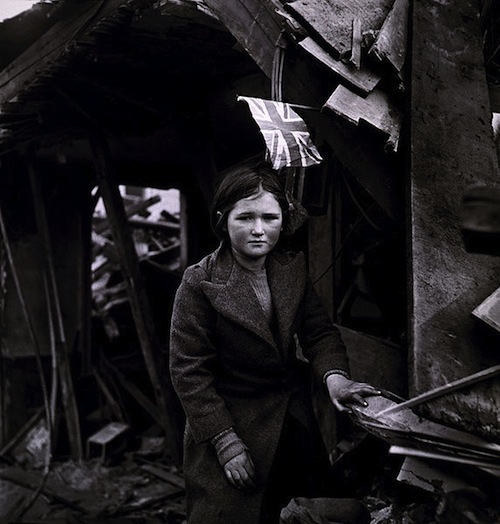
A girl standing in the ruins of Battersea in January, 1945, after a V2 raid. Photograph taken by Toni Frissell, US Women’s Army Corps.
On Friday in Five Books, Five Songs: Through The Large Four-Chambered Heart
January 23, 2013
Five Books, Five Songs: Doing the Lambeth Walk
“We play a different way
Not like you, but a bit more gay . . .”
Poor Sophie and her family have a lot to contend with in The FitzOsbornes in Exile, what with governesses trying to turn them into young ladies and aunts trying to marry them off to vile bachelors and assassins trying to shoot them. It’s a good thing they have Julia to distract them from their worries. For instance, she tells the FitzOsbornes all about Me and My Girl, which she has just seen in the West End, and then she teaches them her favourite song and dance from the show. Here’s a clip from a more recent Broadway production, starring Robert Lindsay as Bill, the Cockney barrow boy who shows the Mayfair toffs how to do the Lambeth Walk.
On Monday in Five Books, Five Songs: The FitzOsbornes “keep smiling through”.
January 20, 2013
Five Books, Five Songs: The Sea Is Writhing Now
“Under the water, I saw it lying there
Creamy skin, lots of flowing golden hair
It was alive, that I know
I saw it gesture to me with the ebb and the flow . . .”
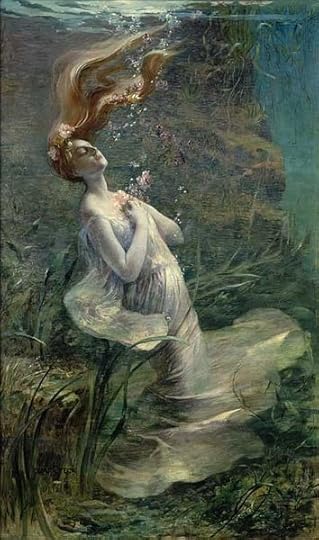
If you’ve read A Brief History of Montmaray, those lyrics might bring to mind a certain spooky scene (actually, several spooky scenes) in the book, especially if you replace “golden hair” with “raven hair”. The lines are from a beautiful and haunting song called From A Million Miles by Single Gun Theory.
I’m not sure how well-known Single Gun Theory is outside Australia (not that the band was ever terribly famous within Australia), but apparently their music has featured in several films and television series. If you like the dreamy, ethereal sound of From A Million Miles, you will probably enjoy Like Stars In My Hands, the 1991 album featuring that song, and their subsequent album, Flow, River Of My Soul. Single Gun Theory hasn’t produced an album since 1994, but lead vocalist Jacqui Hunt released her debut solo album a few years ago.
On Thursday in Five Books, Five Songs: Julia cheers up the FitzOsbornes.
January 16, 2013
Five Books, Five Songs: Hester’s Request
A couple of weeks ago, Genevieve asked me a good question about the FitzOsbornes’ tastes in music, which got me thinking about all the musical references in my books. Here’s the result – five blog posts, each featuring a book I’ve written (or am writing) and a song connected with that book.
Today, I’m going to talk about the most music-filled book I’ve written, The Rage of Sheep, which features dozens of references to 1980s pop music. How can I possibly choose just one song from that book?
Well, at first I thought it would have to be Sheep Go To Heaven by Cake, because two lines from that song appeared as an epigraph in the novel’s initial draft. However, my editors pointed out that quoting lyrics from songs was not a good idea because a) it usually takes ages to track down a song’s copyright holder, which is usually a music publishing company, and b) they usually refuse permission to quote their lyrics unless you agree to pay them thousands of dollars. As I didn’t have the time, energy or money for any of that, I confined my epigraph to a quote from a long-dead writer whose work was out of copyright1. Sheep Go To Heaven is a great song, but it’s not actually in the finished novel.
That’s why I decided on one of the songs that appears in the final chapter of The Rage of Sheep. You know how lots of YA books with a high school setting end with a school dance, and the dorky heroine turns up looking unexpectedly beautiful in a new dress, and the popular guy suddenly realises she’s his One True Love (or else, the heroine suddenly realises her best friend has been her One True Love all along) and all the popular girls realise how mean they’ve been and embrace the heroine, and she forgives them, and the scene ends with them all linking hands and dancing in a big, happy circle? Well, none of that happens at the end of The Rage of Sheep, except it does involve a school dance2. And the DJ does play Hester’s favourite song, which is also (by a remarkable coincidence!) one of my own favourite songs. It’s pretty hard to dance to it, but the lyrics are a wonderful mix of gloom and joy, hope and cynicism, sheer nonsense and deep meaning. It’s by XTC and it’s called Senses Working Overtime.
On Monday in Five Books, Five Songs: the song that inspired the spookiest scene in A Brief History of Montmaray.
_____
It was James Whistler. If you want to know what he said, you’ll have to read The Rage of Sheep. ↩
By the way, the most memorable scene in a YA novel involving a school dance? The climax of Dreamrider , by Barry Jonsberg. ↩
January 7, 2013
Giant Squid Makes Film Debut
Yes, Memoranda brings you all the important news. Scientists from Japan’s National Science Museum have filmed the giant squid in its natural habitat for the first time, in the dark depths of the Pacific Ocean. Scientist Tsunemi Kubodera described the creature as “shining and so beautiful”, and estimated it would have been eight metres long if it hadn’t been missing its two longest arms.
By an amazing coincidence (well, not all that amazing, considering my interest in giant squid), I was only yesterday reading about Pierre Dénys de Montfort, the French naturalist whose claims about a “colossal octopus” that attacked ships were dismissed by his peers as sensationalist nonsense. Poor Pierre! Well, okay, maybe some of his illustrations were slightly exaggerated . . .

Pierre Dénys de Montfort’s ‘Colossal Octopus’ attacks a merchant ship, 1810
January 3, 2013
Favourite Books And TV, Plus A Book Giveaway
The Book Smugglers kindly invited me to write a guest post about my favourite books and TV of 2012. My chosen favourites won’t come as any surprise to regular readers of this blog, but you can read my post here. The Book Smugglers are also giving away a copy of the Vintage Classics edition of A Brief History of Montmaray, with entries closing on January 13, 2013.



